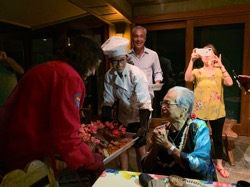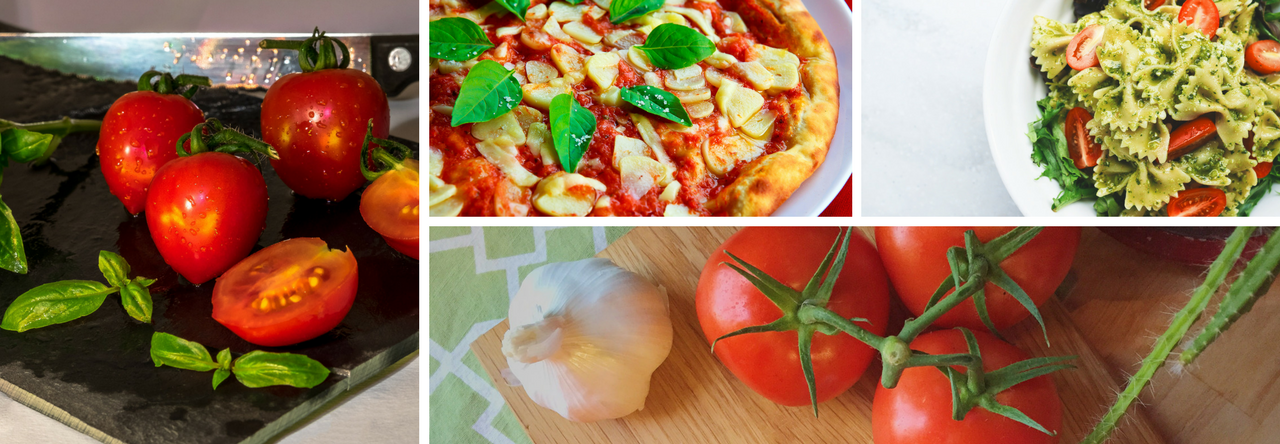Sunshine and the Suckling Pig
Some years ago I cooked a suckling pig at a friend’s party. A classy Chinese lady came up to me and said, “Thank you, since I was a little kid in China I did not taste something like this, you brought back beautiful memories.”
We chatted for a while, then I asked a question I never ask to women: “How old are you?”
“97,” she replied.
“Please,” I asked her, “When you turn 100, please call me, and I will cook the suckling pig again for your birthday.”
A few years later, my phone rings. “Excuse me, Doctor, I am sorry to disturb you and this may sound strange, but my mom is turning 100 and she said you promised her you would cook a suckling pig for her. I called because she insisted, I am sorry, but… what should I tell her?”
“Come over with all the family, please,” I replied.
We had a wonderful party and the 100 year old lady—who I will call Sunshine, as everybody does in her family—walked up 2 flights of stairs to get to my “Lanai” where we ate.
Time passed. Recently, I got a message from a student: “Grandma is turning 105 and wonders whether you will cook the suckling pig for her one more time.”
Tonight I did. We had a wonderful party, Sunshine again walked up two flights of stairs to get to my Lanai, ate everything, and asked if we can do it again in 2020.
Here’s the recipe for Sunshine’s Suckling Pig, adapted from Julia Child.
Ingredients
You’ll need a large oven baking pot and aluminum foil for this recipe.
- A 12-14 pound suckling pig

Sunshine and the suckling pig
- A fresh large apple
- 250 ml of vinegar
- Sage
- Thyme
- Butter (100 grams, or 1 stick)
- Olive oil
- Celery, chopped (4-5 cups, divided)
- Carrots, chopped (2 cups)
- 4-6 medium size sweet onions or red onions, chopped
- ¼ cup dry mustard
- 1 tablespoon Worcestershire sauce
- ¼ cup soy sauce
- 1/3 cup honey
- Salt and pepper
Cooking time: A total of 2:15 minutes for a 12 pound pig; 3 hours for a 22 pound pig, when thermometer should read about 185° F in the hip (I do not use it, just go by time).
Preparation
- Preheat the oven to 450 degrees Farenheit.
- Wash the pig well, especially the ears, nose and mouth by immersing in a bath-tub with ¼ cup red wine vinegar/gallon, + 2 tablespoons of salt /gallon. Leave it soaking for 2-3 hours.
- In a large skillet, sauté on low/medium heat about 2 cups each of chopped onions and celery with the butter for about 15 minutes, until the celery and onions are soft.
- Rinse the pig, and then dry it.
- In the stomach cavity, place salt, black pepper, thyme, and sage. Add the sautéed onions and celery. Then sew the pig’s belly closed–you can use 2-3 inch nails and wrap a string around them.
- Massage the whole pig with olive oil.
- Put it in the roasting pan in a sitting position, if necessary with its back legs straight forward to make it fit in your largest roasting pan.
- Wrap aluminum foil around the ears and on any portions of the pig that touch the side of pot –so that it does not drip in the oven, Place a ball of aluminum foil in mouth to keep it open. Tuck the tail inside the butt so does not burn.If you like, you can use a thermometer that you will stick in the thigh down to the hip. The pig will be ready when the temp reads 185°
- Put the roasting pan with the pig in an oven that has been preheated 450°F oven (Convection-Roast best).
- Cook at 450°F for 30 minutes, basting once after 15 minute with olive oil
- Lower the heat at 350°F, and let the pig cook for another 1:45 minutes, basting every 30 minutes with the fat that accumulates in the bottom of the pan. Use a brush and try to baste the whole pig.
- One hour before end of the cooking time, add the remaining 2-3 cups of chopped raw celery and carrots to the bottom of the oven pot, so that the fat from the pig drips onto the chopped carrot and celery mixture.
- Prepare the Glaze:In a medium sized bowl, combine ¼ cup of dry mustard, ¼ of cup of Soy sauce, 1 tablespoon of Worcestershire sauce, 1/3 cup of honey and 2-3 tablespoons water. Mix well.
- 40 minutes before the pig is ready, start basting it every 10 minutes with the glaze –use a brush. This will give a beautiful brown looking and very tasty skin.
- Turn the oven off and let the pig rest at least 30 minutes or longer (1 hour is best). This is critical for the juice to percolate and give more flavor.
- Remove the pig from the oven. Take off the foil from the ears, untuck the tail, and remove the foil ball from the mouth. Place an apple in the pig’s mouth and cover with little flowers to make it look good –see photo.
- Serve and enjoy!
Italiano: Maialino di latte al forno
Peso: 5-6 kg. Tempo di cottura totale 2 ore e 15 minuti; 3 ore per un maialino di 10kg.
- Lavarlo bene, specie orecchie naso e bocca, metterlo in una tinozza coperto d’acqua e con circa 250-500 ml di aceto di vino (quantità aceto dipende da quanta acqua c’è che dipende da quanto è grande la tinozza.
- Lasciare per 2-3 ora. Sciacquare bene, asciugare.
- Accendere forno 235°C, convection roast meglio.
- Cuocere in una padella con 100 g di burro l’equivalente di “2 cups/270 grams” (1 cup = 136 grammi) di sedano e 270 grammi di cipolla rossa tagliate a pezzetti di circa un cm. Le verdure devono essere ben cotte, circa 15 minuti fuoco medio/basso.
- Tagliare a pezzetti altre 270 grammi di sedano e di carote e lasciare da parte per dopo queste non vanno cotte!
- Mettere nella pancia del maialino: timo, salvia, sale grosso, pepe nero e le verdure appena cotte. Cucire con spago, o come preferite la pancia del maialino per tenere il ripieno dentro la pancia. Spalmare il maialino con le mani con olio d’oliva di ottima qualità.
- Coprire le orecchie con carta stagnola (argentata), mettere nella bocca del maialino una palla di carta stagnola per tenergliela aperta, infilare la coda nel sedere del maialino sennò si brucia, mettere il maialino seduto nella pentola e dove la pelle tocca la pentola ai lati, mettere carta stagnola in modo che quando si scioglie il grasso della pelle va in pentola e non in forno.
- Infornare per 30 minuti a 235°C, poi abbassare a 175°C e continuate per 1ora e 45 minuti, cioè fino a 2 ore e 15 minuti tempo totale (per un maialino di 5kg e di più se è più grande). Dopo i primi 15 minuti, spalmare con un pennello con altro olio di olive, poi spalmare ogni 30 minuti col grasso che si raccoglie in pentola.
- A 1 ora dalla fine, cioè dopo 1 ora e 15 minuti, aggiungere direttamente nel fondo della pentola in forno le restanti 450 grammi di sedano e di carote non cotte.
- Preparate la cremolata: 25 grammi di senape in polvere, 25 grammi di Salsa di soia, 45 grammi di miele, 1 cucchiaio di salsa “Worchester,” 3 – 4 cucchiai d’acqua, mischiare bene.
- 40 minuti prima che il maialino sia pronto spennellate sulla pelle del maialino la cremolata ogni 10 minuti, perciò ogni volta usate circa ¼ della cremolata, fino a finirla.
- Spegnete il forno e lasciate il maialino a riposare almeno 30 minuti, meglio 1 ora.
- Poi guarnitelo, togliete la carta stagnola, mettetegli in bocca una mele, copritelo di fiori e portatelo a tavola (vedi foto) e buon appetito.

Sunshine and the suckling pig


